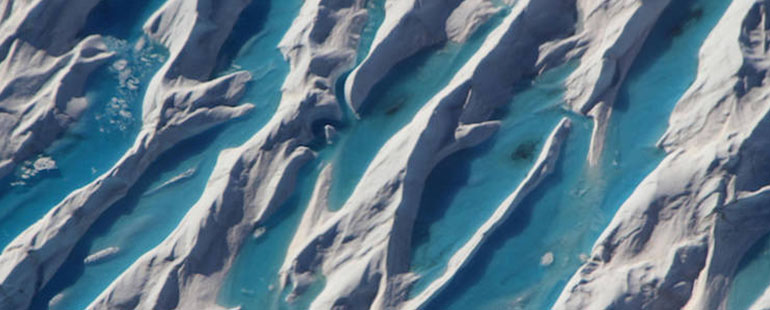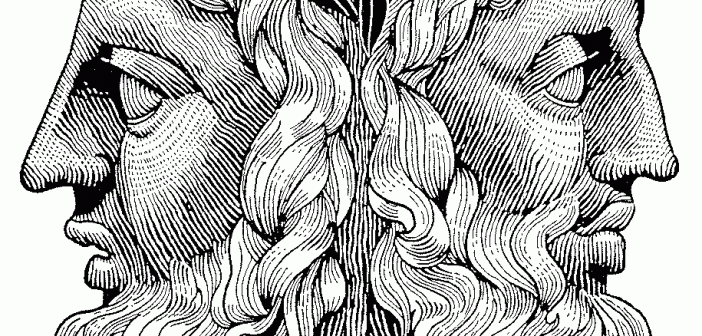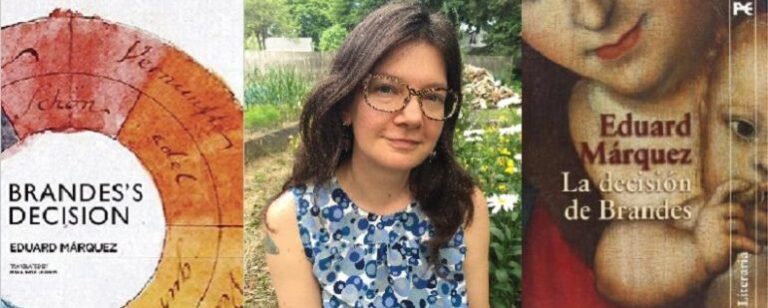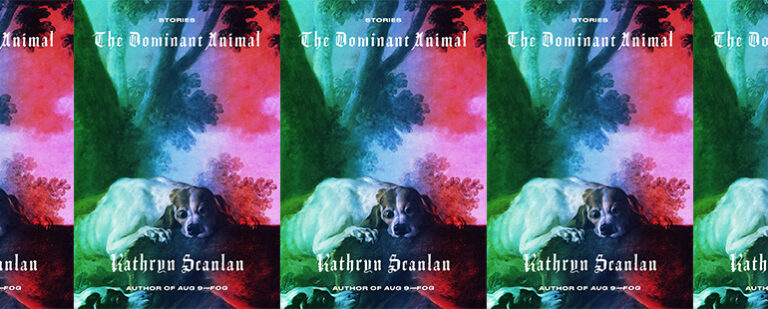“We’re standing on the edge of the cliff”: An Interview with Lauren Groff

In early 2019, I attended the first meeting of Miami artist Xavier Cortada’s Underwater Homeowners Association, initiated to make citizens of South Florida aware of the elevation at which their homes sit, and their potential exposure to rising sea levels. The Underwater HOA, a “participatory public art project,” kicked off in the last days of 2018 with the installation of yard signs designed by the artist indicating how many feet oceans would need to rise before marked properties were submerged. The thrust of the project is that we should be aware of both our neighbors and “the chaos to come,” and should develop community networks that will allow us to help each other now and when the situation becomes dire.
The threat of the rising seas seemed like a false doomsday prophecy to me at the time. My most intense exposure to sea level rise had been having to wade through knee-high water in a suit and showing up to a friend’s wedding with seaweed stuck to my loafer like an embarrassing piece of toilet paper. It was uncomfortable and absurd, but not life-threatening. I hadn’t yet taken the extra step of thinking about future generations. I hadn’t considered my neighbors.
At the event, Brian Haus, chair of the Ocean Sciences department at the University of Miami Rosenstiel School of Marine and Atmospheric Science, explained that conservative estimates have the sea level rising one single foot by the year 2100. One foot! I currently live nine feet above sea level. This information might have emboldened me had it not been for Cortada’s artistic empathy. One foot means South Beach is gone. One foot means the financial center of Miami is gone.
In the face of this information, it’s difficult to have a vision for the future. The arts, however, offer a way to cope with the existential dread that access to new and existing information only exacerbates. I began seeking out works of climate-fiction, colloquially known as “cli-fi,” with this in mind. When Lauren Groff announced at the beginning of the new year that she’d be partnering with Greenpeace to curate art about climate change for the entire month of January, I knew I’d have to follow along. The work would be from a mix of genres, including poetry, fiction, and visual art, and would be published daily on Greenpeace’s website. I was excited to read new pieces by Nathaniel Rich and Ada Limón, among others—the partnership would be corralling a group of writers and artists to try to create some vision of our future.
The work published last month did not disappoint. In Karen Russell’s short story, “The Children of La Medusa,” for example, a category five hurricane makes landfall in Cuba. The island appears destroyed, but then, from its pristine coral reefs, a new type of being arises: “At daybreak, the first child crawled out of the sea,” Russell writes. “A few bars of pink sunlight later, it was followed by a second. These creatures were not children any longer, but no word yet exists in our human languages for what they had become.” Where statistics fail in emotional appeal, vision may succeed. Even though Russell has drawn a future where humans are replaced by a strange, new creature, I derive comfort from imagining the Earth carrying on without us.
Good fiction succeeds in revealing great truths about us where other forms cannot. Our ability to imagine the end instead of projecting it scientifically can make it easier to accept. Conjured visions allow room for skeptics; the door is open for them to come inside and take a peek at what may be, without others judging them for the way they’ll feel about it. After all, fear of climate change is a fear of death.
Groff is well-equipped to be at the helm of a project dealing with such difficult subjects. The story “At the Earth’s Round Imagined Corners,” from her 2018 collection Florida, is a reference to a John Donne sonnet about death. In that poem, the speaker imagines the great floods and fires of biblical apocalypse and beseeches God to give him the tools with which to repent. In a way, the team members of Greenpeace’s Climate Visionaries Artists’ Project are doing the difficult work of asking for forgiveness.
Collected in the project, the speaker in Ada Limón’s poem, “Salvage,” says, “and because I cannot apologize / to the tree, to my own self I say, I am sorry. / I am sorry I have been so reckless with your life.” In R.O. Kwon’s essay, she equates raising awareness of climate change with her childhood evangelism. These writers might be able to impact those who haven’t wanted to engage before. This, it seems, is the mission of this project.
I recently spoke with Groff in Key West, at sea level, about her Climate Visionaries work, writing climate fiction, and talking to our youngest about climate change.
Jason Katz: How did your partnership with Greenpeace come to fruition?
Lauren Groff: One of my friends, Nicole Sands, works for Greenpeace and had an idea to get an author or artist to take over their social media, try to get people to respond creatively to climate change. Her idea is that though there’s a great deal of brilliant nonfiction about the subject out in the world, if readers don’t want to deal with such a fraught topic emotionally, they’re just going to choose to not pick it up at all. But if the thinking about climate change resides in the art or entertainment a viewer consumes, it’s much harder to look away.
I try to pay attention, but at times I feel so much despair, I am filled with a sense of helplessness. It’s almost a learned response, Pavlovian. At the same time, I know that nearly any kind of action spurs other action, and that it’s profoundly important to not feel as though we’re helpless, that we’re just going to let the world die around us, that we’re just going to just feed our children into a darkened future. I mean, if we saw someone threatening the lives of our kids, we’d do everything in our power to wrestle that person to the ground. Everybody on the planet can write or draw or make a sculpture that responds to climate change; that act alone may make them feel less frozen—it may make them begin to march and protest and boycott and fight back. And art can strike the emotional note that makes people start to move and act and change.
JK: How did you arrive at the roster of writers and artists that are part of the project?
LG: I made a list with the help of Travis Nichols who works at Greenpeace and we reached out to them personally. We actually had this incredibly diverse list of people, in terms of gender and background, but a lot of them had a really hard time grappling with the idea of climate change. It ended up that a vast majority of those who handed work in ended up being women.
JK: Now that the project has wrapped up, what are you working on next?
LG: I have a longform nonfiction piece coming out in Harper’s in which I engage with climate change. We’re in the fact-checking stage. It’s hard. Truth is a bit more shifty in fiction than it is in nonfiction.
JK: Can you talk about fact-checking as it pertains to climate change?
LG: I think we have a moral responsibility to be as correct as we can be. Because I’ve lived in a world of fiction for the past twenty years, I feel my first truth is more of an emotional truth than it is something that can be fact-checked. Which is bad if you’re writing longform nonfiction. You have to go against some of your impulses. For the piece, I went undercover at a doomsday prepper camp in North Carolina. I thought I was going to die the entire time. It was the scariest thing I’ve done in a long time.
JK: Did you tell your kids what you were going to do?
LG: Yes, and they told all of my friends that weekend that “Mommy is at apocalypse camp!” I don’t own a gun. I didn’t even bring a multi-tool. And a great number of doomsday preppers believe in stocking up guns to use against what they call the “zombie hordes.”
JK: How do you talk about climate change with your kids without scaring them?
LG: I certainly don’t want them to be as anxious and full of dread as I am, but we talk about it. It’s possible their life expectancy will be shortened by climate change.
I make a lot of really dark jokes. They laugh; the jokes also make them sad. We talk about the issues ahead of them openly because I think pushing it down is only going to make them into strange, warped people.
At the same time, one’s job as a parent is to be one’s children’s shell until they’re able to go into the world as vulnerable but functional humans. I actually tried to get my kids to draw things for this Greenpeace project because I thought it’d be interesting to have someone of their generation to respond to the subject in art. But like some writers who agreed to be part of it, then backed out, they just couldn’t think of what to draw. Sure, they could draw the Great Pacific Trash Gyre, but that’s the saddest thing possible to draw.
JK: It seems like sticking to the facts makes us feel most comfortable.
LG: Right. I don’t mean to make it sound like there aren’t people engaging with climate change in fiction, but I’m tired of reading stories that don’t have any urgency about the greatest problem of our time, the thing that is probably going to kill humanity. We’re standing on the edge of the cliff, there’s a hurricane blowing, and we’re whistling merrily into the wind. If the moral stakes of our current moment aren’t imminent in the art we’re making, it’s almost as though our art is contributing to our distraction, not engaging with these moral urgencies.
JK: Climate fiction, as a genre, is slowly increasing in popularity. What are, to you, some notable works of cli-fi?
LG: The first that comes to mind is Richard Powers’s The Overstory. I thought it was amazing: it put trees in the central, pivotal position where humans generally take up space in a narrative. De-anthropomorphizing the planet is such a hard thing to grapple with in fiction. Jenny Offill’s new book, Weather, is [out this month]. I love her very much. There has historically been a kind of a hole in this field, though. Most of the people that I’m in love with who are doing this are working in the realm of nonfiction. Emily Raboteau, a great fiction writer, has been working on a lot of nonfiction climate writing. Rebecca Solnit, Megan Mayhew Bergman.
It’s tricky because in fiction, you don’t want to be polemical. Good literary fiction isn’t polemical. So how do you talk about climate change in literature? The only way that I’ve discovered how to do it in my own fiction, which is not necessarily the best or right way, is to talk about the dread and the grief within the human soul going through its days. We all need to wake up, take showers, eat breakfast, to do the quotidian nonsense to get through the day, but at the same time there’s a sword of Damocles hanging over our heads. The awareness of the distance between granular, textural daily life and this looming dread of disaster is what I wanted to think about. It might be easier for visual artists and poets to engage with the issue today. In poetry, there’s no essential tethering to narrative; I think narrative is hard when it comes to climate change because narrative is about the past—in which climate change was never as urgent as it is today—or about what could possibly happen in the future. And if it feels like the human future is closing down, becoming smaller and darker, it’s incredibly hard to have the will to write into it.
This piece was originally published on February 14, 2020.


